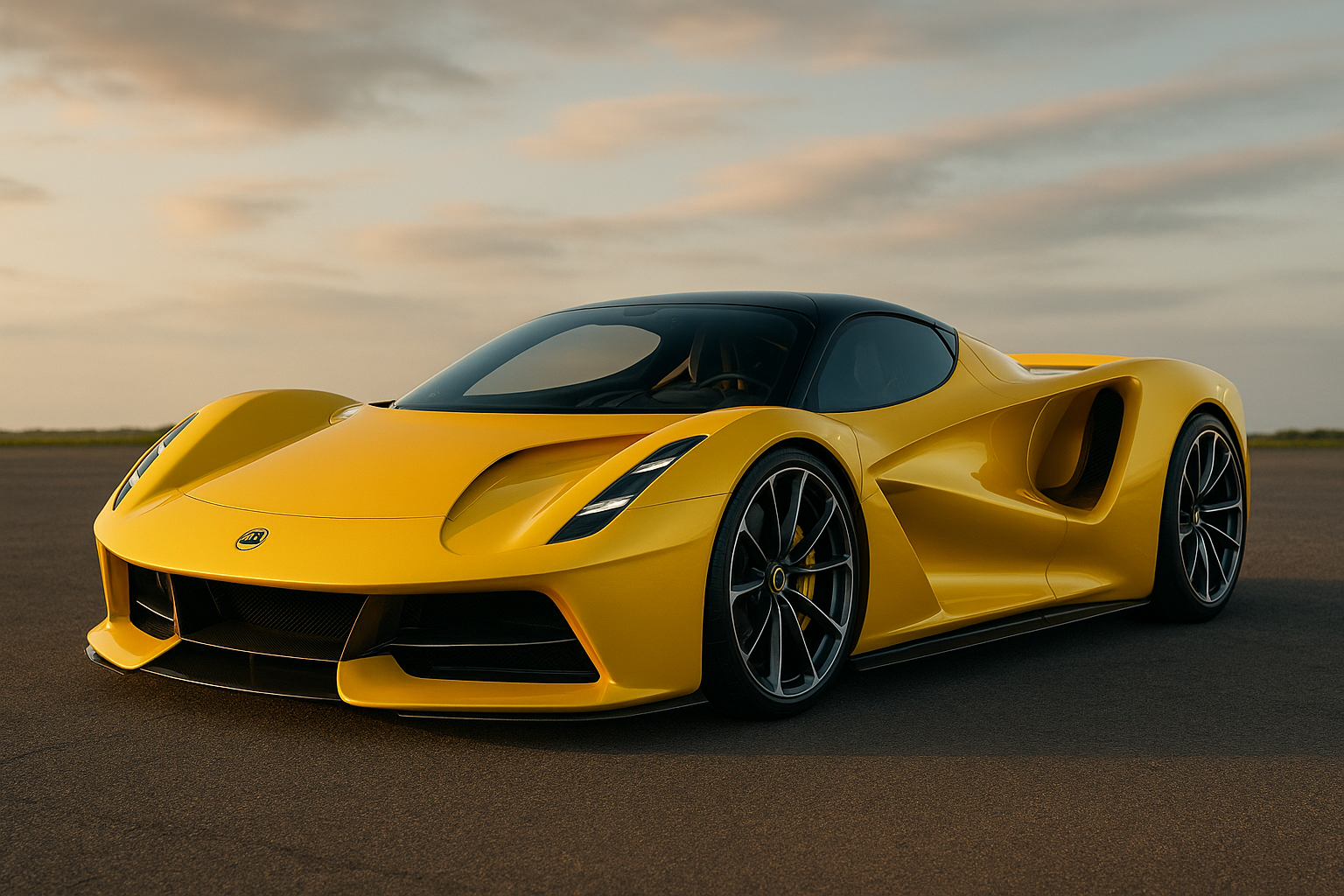The 10 Most Powerful Production Cars on the Planet: from 1,000-hp hybrids to 2,000-hp hyper-EVs
For years, an extreme car was judged by its top speed; today—given ever-stricter limits—the real yardstick is absolute power. Jet-size turbochargers, torque-fill hybrid systems, 800-V battery packs and record-breaking electric motors have pushed output well beyond the psychological 1,000-hp barrier. Here, in ascending order, are the ten road-legal cars with the highest horsepower figures in the world—machines that turn every burst of acceleration into something closer to take-off than traditional driving.
10. Ferrari SF90 XX Stradale — 1,030 hp
Maranello opens the list with its first street-legal “XX.” A 797-hp twin-turbo V8, three e-motors and GT3-style aero rocket the car from 0-200 km/h in 6.7 s. A fixed carbon roof, swan-neck wing and sub-1,560 kg curb weight make this the most extreme road-going Ferrari ever built.
9. Aston Martin Valkyrie — 1,160 hp
Co-designed with Adrian Newey, the Valkyrie packs a 6.5-litre Cosworth V12 spinning to 11,100 rpm plus a 160-hp KERS unit. At just 1,270 kg and with 1,100 kg of downforce at 240 km/h, it’s essentially an LMP1 prototype with plates. Feet-up seating, an F1-style wheel and inboard push-rod suspension turn even a city bypass into a Le Mans warm-up lap.
8. Koenigsegg Jesko — 1,280 hp
On pump fuel (E85 lifts it to 1,600 hp), the 5.0-litre V8 uses a 12-kg flat-plane crank and e-compressor anti-lag turbos. The nine-speed Light-Speed Transmission shifts in 20 ms with no synchros. The High-Downforce wing generates 1,400 kg at 275 km/h, while the smoother Absolut version targets a theoretical 500 km/h.
7. Koenigsegg Regera — 1,500 hp
Ängelholm’s first hybrid skips a traditional gearbox: Direct Drive links a 1,100-hp twin-turbo V8 to three e-motors via a fixed 2.73:1 ratio, unleashing a relentless 2,000 Nm and 0-400 km/h in 22.8 s. A 4.5 kWh liquid-cooled battery and colza-oil-treated leather cabin marry brutal tech with artisanal sustainability.
6. Bugatti Chiron Super Sport 300+ — 1,600 hp
The 8.0-litre quad-turbo W16 gets upgraded pistons, oil pumps and turbos to handle the “Thor Spec” 1,600 hp. A 25-cm long-tail cuts drag beyond 420 km/h. It’s the only car here to have genuinely broken 300 mph (304.773 mph in 2019), yet it still offers dual-zone climate control, an Accuton hi-fi and leather-trimmed cup-holders.
5. SSC Tuatara — 1,750 hp
A 5.9-litre twin-turbo V8 with variable-geometry intakes, an 8,800-rpm redline and a carbon-titanium monocoque. With a 0.279 Cd and 2,200 lb of downforce at 300 km/h, it has touched 474.8 km/h on Nevada’s SR-160. Rotating cabin displays show only essential info above 300 km/h to lighten the driver’s cognitive load.
4. Hennessey Venom F5 — 1,817 hp
The 6.6-litre “Fury” V8—billet-aluminium block, twin 76-mm turbos—is bolted directly to an 86-kg carbon monocoque. Dry weight: 1,360 kg. F5 Mode coordinates active aero, ABS and traction control for a 500 km/h Texas run. Only 24 coupés and 30 roadsters will be built, each signed by the technician who torqued the final bolt.
3. Bugatti Bolide — 1,850 hp
Track-focused yet road-approved in limited numbers, it weighs 1,450 kg thanks to 3-D-printed titanium fasteners and magnesium push-rods. Fed 110-RON fuel, the W16 delivers 1,850 hp and 2,800 kg of downforce at 320 km/h. The roof intake’s active “bubble-skin” reshapes itself, cutting drag by 10 % on straights.
2. Rimac Nevera — 1,914 hp
Four e-motors fed by a T-shaped, 120 kWh structural oil-cooled battery. Torque vectoring calculates ideal wheel torque 100 times per second: 0-100 km/h in 1.85 s, 0-400-0 in 29.9 s. Capable of 500 kW DC charging—0-80 % in 15 min. Despite a 2,150 kg curb weight, adaptive Air-Ride suspension sustains 1.4 g laterally.
1. Lotus Evija — 2,000 hp
Four integrated axial-flux motors, 1,700 Nm per axle, and a 93 kWh pack co-developed with Williams Advanced Engineering. A 129-kg carbon monocoque keeps dry weight to 1,680 kg: a 1.19 hp/kg ratio. Porous Venturi tunnels pipe air through the tail, slicing drag by 30 %. Limited to 130 units, it targets 0-300 km/h in under nine seconds and 402 km WLTP range.
From spec sheets to the road
These numbers astonish on paper but make sense only behind the wheel: the neck-snapping surge of 1,500+ Nm, the howl of a 110-mm turbo—or the eerie silence of 2,000 electric horses propelling you without a drop of fuel.
For anyone eager to experience it first-hand, short-term hypercar rental offers all-inclusive packages with instructor support, specialist insurance and real-time telemetry—a way to turn record-breaking stats into lived kilometres without the purchase commitment or maintenance costs of a collector car. Ultimately, the true measure of these 1,000-plus-hp monsters isn’t the brochure; it’s the adrenaline that lingers long after you’ve pressed the right-hand pedal to the floor.
























